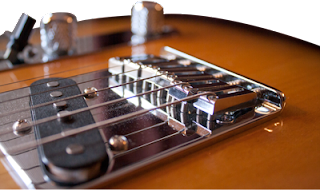Hello everyone and welcome to this week's article!
Today we are going to talk about a guitar that I have owned for about 5 years, from around 2009 to probably 2013, the Ibanez SZR 520 TGB!
This serie of guitars was made in China in 2008-2009, and was a half-way between the classic Ibanez style, fast, comfortable and light, and a more classic Gibson - PRS style: the guitar featured a nice flamed maple top (exceptional for the price range, which was around 500$), a slightly rounder neck, a thicker and heavier body.
After featuring also a Marty Friedman signature model with this same shape, the line was discontinued in 2009.
What can I say about this instrument? I loved it, and it embodies the things I love from Ibanez (a fast and very playable neck and fretboard, great quality to price ratio, a cool looking Gibraltar III bridge) and the classic elements of historic brands like Gibson, such as a white binding both in the body and in the neck, a set-in neck joint, 22 frets, solid mahogany body, and a classic shape.
The pickups were stock pickups with a neodymium magnet, that supposedly should have performed quite good, but the truth is that I swapped them pretty soon with two EMGs, which were resonating well in that thick, heavy body (I mounted an 85 in the bridge position, because I think it sounds way better than the 81).
The sound was surprisingly "Gibsonish", meaning that it was round and full in the lows, but with the active pickups it had also a powerful musical midrange, and I really loved how it sounded, until I realized that its short scale (24.75") was not the ideal for the tuning I needed (B standard), and therefore I had to trade this guitar in for a longer scale one.
All in all the guitar was anyway very pleasant to play, the fretboard was as smooth as butter, the aesthetic was very pleasant, and the sound was super warm, and I have used it to record the rhythm guitars of this album:
I definitely suggest anyone who doesn't need to play a particularly low tuning to check this guitar out!
Thumbs up!
SPECIFICATIONS:
- Body type: Solid body
- Body material: Mahogany w/ flamed maple top
- Neck joint: Set-in
- Bridge: Gibraltar III fixed
- Hardware color: Chrome
- Neck type: SZR
- Neck material: 1-piece mahogany
- Scale length: 628mm/ 24¾"
- Fingerboard material: Rosewood w/ binding
- Fingerboard inlays: Small pearl dot
- Frets: 22 / medium
- Pickup configuration: HH
- Bridge pickup: Ibanez ND1-B (H)
- Neck pickup: Ibanez ND1-N (H)
- Controls: 2 volume / 1 tone / 3-way toggle
Become fan of this blog on Facebook! Share it and contact us to collaborate!!







